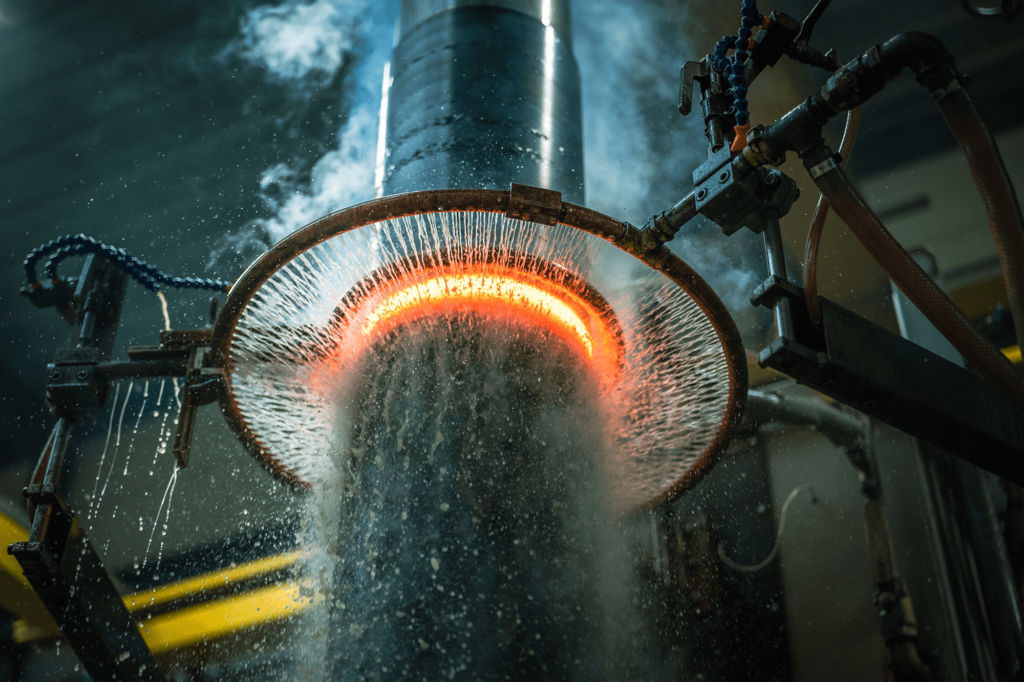The process and its advantages
Heating directly in the workpiece by inductive hardening
The heating needed for inductive hardening takes place within the component itself. This makes it possible, for instance, to restrict the hardening specifically to the interior or the exterior surfaces of a component. This is accomplished through induction. For this, a copper coil is used to generate an alternating electromagnetic field. The electrical resistance in the component causes the development of heat, which can be used to reach the specific hardening temperature.
Hardening procedure
Unlike other hardening processes, induction hardening takes place in sequences. This means that each segment of the area to be hardened can be heated in turn by repositioning the inductor and quenching the segment using a sprinkler.
Depending on the size of the component and inductor, the workpiece can also be gradually slid through the inductor. It may also be necessary to perform a rotary motion during this process (e.g. for shafts).
The stresses in the steel are subsequently relieved at low temperature or by tempering.
Brief heating and dwell times ensure very low oxidation. Formation of the desired microstructure requires that the dwell time and hardening temperature are set in the correct relationship. This relationship depends on the type of the material, and especially its carbon content. The typical temperatures lie between 800
°C and 950 °C

The advantages at a glance
Discover some of the major advantages of inductive hardening:
- Locally limited hardening easily possible
- Quick processing time thanks to short process duration
- Slight warping and minimum scale formation
- Suitable for automation, and reproducible
the process and its advantages
Inductive hardening is ideally suited for components with complex geometries and tools that are exposed to extreme wear in certain places. For example, the blade of a pair of pliers is suitable for induction hardening. Further application examples include bolts, crankshafts, gear wheels, valve tappets, and rollers.
Suitable materials
Quenched and tempered steels selected for inductive hardening must have a carbon content greater than 0.3 %.
Suitable materials include:
| Material number | Short name | Steel grade | HRC |
| 1.0503 | C45 | Quenched and tempered steel | 48-58 |
| 1.7225 | 42CrMo4 | Quenched and tempered steel | 48-60 |
| 1.3503 | 100Cr6 | Ball bearing steel | 50-65 |
| 1.8159 | 50CrV4 | Quenched and tempered steel | 48-60 |
| 1.2826 | 60MnSiCr4 | Collet steel | 48-58 |
Customer specifications for the heat treatment
We are delighted that you wish to commission inductive hardening from us. To complete your order, the information required includes:
- Material designation
- Nominal value for the surface hardness
- Nominal value for the hardness depth
- Identification of drill holes near the surface
- Is tempering also required?
For further information required, please refer to the printed order form, which we will be happy to provide.
Process locations
Refer to our location overview to learn at which Härtha locations we perform inductive hardening.